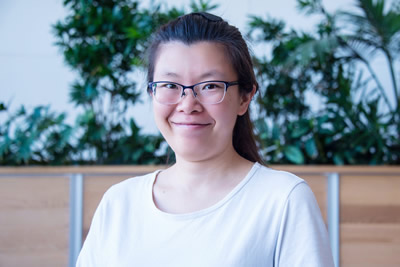Dr. Chong TengBy Ahmet Bakirbas  Dr. Chong Teng, also known as TC, is a post-doctoral researcher in Prof. Blake Meyers’ laboratory at the Donald Danforth Plant Science Center in Missouri, where she investigates the role of phased small interfering RNAs (phasiRNAs) in the reproductive development of plants. TC completed her undergraduate degree in Biology at Chinese Agriculture University and PhD in Genetics from Dr. Jianru Zuo’s laboratory in Chinese Academy of Sciences (CAS), both located in Beijing. TC did a two-year postdoc in Dr. Bin Liu’s laboratory at the Chinese Academy of Agricultural Sciences (CAAS) on the dynamics of CRY2 protein in the model plant species Arabidopsis thaliana followed. In 2014, TC relocated to the United States to start her second postdoc in the laboratory of Prof. Blake Meyers. TC is currently working on finding the targets of 24-nt phasiRNAs in maize (corn) anthers, which are currently her favorite RNA molecules. In collaboration with Prof. Virginia Walbot’s lab at Stanford University and Prof. Bing Yang’s lab at the University of Missouri, she and her colleagues established a detailed spatiotemporal analysis of 24-nt phasiRNAs accumulated in meiocytes and the tapetum, where the plant produces pollen. More recently, they showed that deficiency of Dicer-like 5 (DCL5), a key gene in 24-nt phasiRNA biogenesis, causes delayed tapetum development and confers temperature-sensitive male sterility in maize. Surprisingly, the RNA targets of 24-nt phasiRNAs remain completely unknown. Dr. Teng and her colleagues are working to solve this mystery. When asked what drew her to work on phasiRNAs, TC said: “The biology of these RNAs and their roles in maize anthers is a topic that is both challenging and intriguing, just like the animal piRNAs.”
The diminished impact and attention attributed to plant-based research, often called “plant blindness” is a critical issue. This attitude may lead to plant biologists missing out on awards and funding that they could have received if their model organism had been an animal. Dr. Teng emphasizes the importance of plants and plant-focused research by saying: “discoveries [are] often first made in plants, including transposable elements and many aspects of gene silencing. Plant reproductive phasiRNAs resemble animal piRNAs in many ways, except their biogenesis is completely different. Knowing that, the more interesting questions would be what we can learn from this apparent case of convergent evolution and how we can use this knowledge. I hope that members of the RNA Society will find our work as exciting and interesting as we do.” TC points to her first works on Arabidopsis suspension cells in Prof. Weihua Wu’s laboratory as a critical point that inspired her scientifically. She particularly reminisced about Prof. Yan Liang, who taught her to practice positive thinking when there is an “impossible” result. She continues by mentioning her colleagues at Meyers Lab as another source of her scientific inspiration. She said: “People in the Meyers lab continually amaze me with their experiments showing how powerful and informative new sequencing technologies can be.” Even though she has enjoyed recent success with impactful publications, she said that her greatest challenge was overcoming the years she could not get any first author publications. This meant either she had no major project or the topic was extremely challenging. Now she realizes that publications are not a definitive indicator of success but instead a stamp for finishing a project. TC recommends that all trainees improve their scientific writing and critical thinking skills by taking advantage of grant and other writing opportunities whenever and wherever they are available. She said that such experience helps trainees understand the big picture and plan their future experiments. Dr. Teng also actively focuses on improving her presentation skills, which had always been challenging for her. Her approach is to draft a presentation first and then practice it over and over. “It [has] worked really well for me. It doesn’t matter how I prepare it, as long as I have time to practice [it,] my talk [turns out well]” she adds. Speaking of research talks, she adds her favorite RNA society meeting experience was from last year’s meeting. “Prof. Narry Kim’s presentation on SARS-CoV-2 transcriptome at RNA 2020 was impressive, and it was remarkable that it took them only a few months to complete and publish” she says. Readers can follow Dr. Chong Teng on Twitter @tjcteng |
